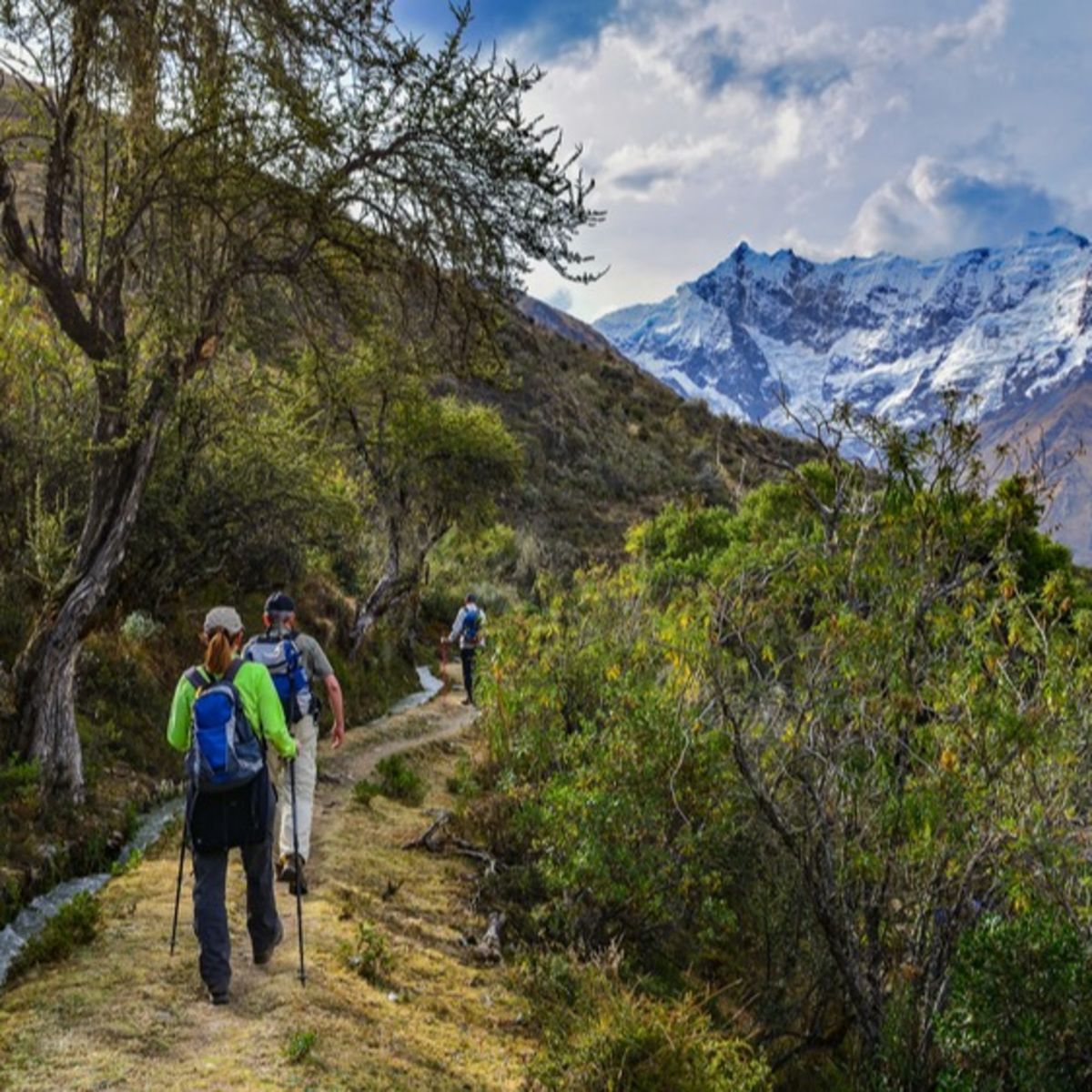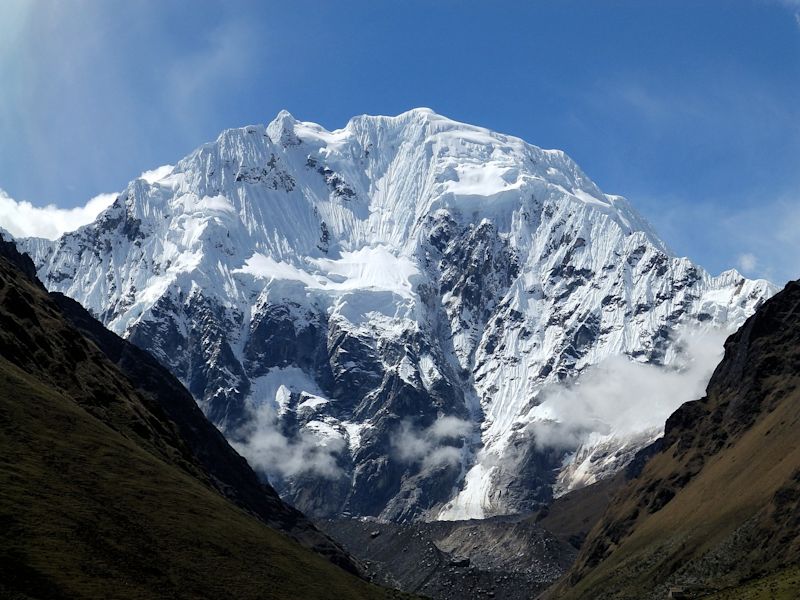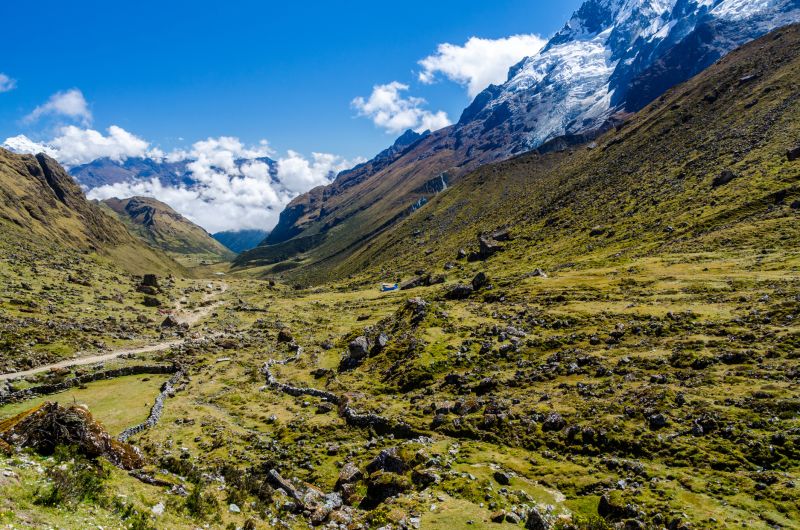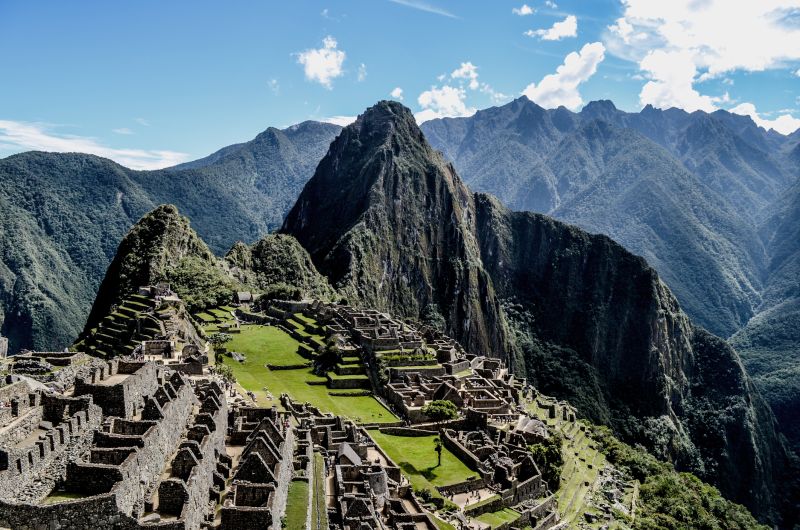Peak season on the Salkantay Trek
Peak season on the Salkantay Trek is April to October. This is the so-called dry season, but note that it's not ever entirely dry in this neck of the woods. Mist and rain are still common, just less so than during the wet season.
That said, this is the time of year that enjoys the most clear skies, and therefore offers the best views of the glorious surrounding peaks like Salkantay. The trails are also in their best condition for pleasant trekking.
Salkantay Mountain is 6,271 m (20,574 ft) high
If you'd like to miss the biggest crowds, we recommend going during one of the shoulder seasons, which are between April and May and also August to early October.
A springtime view on the Salkantay Trek
The Salkantay Trek is growing in popularity year on year, and so you can expect to encounter other trekkers and trekking groups on your adventure.
In fact, because the Salkantay Trek doesn't currently have any restrictions on trekking numbers per day (like the Inca Trail does), it can be become especially busy in June and July.
April and May are a sweet spot
The Salkantay's shoulder season of April and May is a sweet spot in our opinion. We say this for a few reasons:
- It's the start of the dry season so you should have clear-sky days for hiking, but the vegetation is still fresh and a vibrant green from all of the recent rains.
- The trail is usually a little quieter because it's not yet the Northern Hemisphere's summer holidays.
- This is the best time of year for clear skies over Machu Picchu, allowing you to see the ruins without them being fully or partially covered in mist.
- This is also a good time of year for visiting the country's inland Amazon rainforest as well as its coastal desert, so you can hope for good weather anywhere you travel in Peru!
A clear and beautiful view of Machu Picchu taken in the month of May
Off-peak season
Late October to March is the off-peak season for the Salkantay Trek.
The two main risks with doing the trek at this time of year is that:
- Bad weather can wash out sections of the trail.
- Snow can make the Salkantay Pass impassable.
If the trail is fine and you can still trek it, there's a high chance you'll spend much of your time being rained on and having limited views of the surrounding landscape.
The whole point of the Salkantay Trek is enjoying the incredible mountain scenery. So we advise going in the peak season to enjoy as many clear skies as possible.
The Sky Domes are a popular accommodation option on the Salkantay Trek
Average temperatures
Temperatures don't vary much by season on the Salkantay Trek. The first half of the trek (which is the higher and colder portion) has average temperatures of around 20°C in the day (70°F), and roughly 0°C (32°F) at night.
Salkantay Pass is the highest point of the whole trek
No permit is required
If you've investigated the Inca Trail, you'll know that you need a permit to hike that trail. Not so with the Salkantay Trek (at least for now).
That said, you do need to purchase an entry permit to visit Machu Picchu at the end of the trek. (You'll likely do this the day after your trek ends, as Machu Picchu isn't actually on the traditional Salkantay Trek route.)
Note that if you do the Salkantay Trek with a tour operator, they should include the Machu Picchu permit price in your package fee and buy the permit for you.










